Books about China
Page 4 (books 61 to 80)
These pages contain my reviews of books about China that have all been read when researching the information on this web site.
Note: many of the links to the books will earn us a small commission from Amazon if you decide to buy the book as we operate as an Amazon Associate.
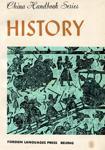
History: China Handbook Series, Foreign Languages Press, 1982
190 pages. ISBN 0-8351-0985-2 Details/purchase ➚
ISBN 0-8351-0985-2 Details/purchase ➚ 


This rare book was produced in Beijing to set out the official Chinese Communist Party's view of history. It is interesting to read Chinese history from this perspective. As you would expect the sufferings of the mass of people is given coverage rather than squabbles among Imperial families. It lacks an index which is a shame. The style is fairly 'official' and full of facts and there are no source references. It is the sort of book you need to read to see Chinese History from another angle, it is then possible to identify the points of divergence and interpretation compared to scholarly but 'foreign' historians.

Inside the Red Mansion, Oliver August, John Murray, 2007
268 pages. ISBN 978-0618714988 Details/purchase ➚
ISBN 978-0618714988 Details/purchase ➚ 


This book was banned in China. It is a slow, tortuous story of the tracking down of the Xiamen 'criminal' Lai Changxing who built up a personal empire and fortune in the 1990s. It lifts the lid on the sleazy world of brothels, corrupt officials and fugitives attracted to a boomtown in the throes of rapid economic transformation. The style is by way of sets of conversations, many of which seem to be irrelevant sidelines to the main story of Lai's eventual capture and imprisonment. A useful guide to the less seemly side of modern China.

Insight Guides: China, APA publications, 1994
406 pages. ISBN 0-395-66244-3 Details/purchase ➚
ISBN 0-395-66244-3 Details/purchase ➚ 



Every travel guide to China seeks to say something different about the country. This nicely illustrated book covers most regions of China as well as customs and traditions. The copy I have is rather out-of-date and the articles that are written by a variety of contributors vary in quality. It is not the best guide book available for travelers.

It's All Chinese to Me, Pierre Ostrowski and Gwen Penner, Tuttle Publishing, 2011
192 pages. ASIN B005M2AHY0 Details/purchase ➚
ASIN B005M2AHY0 Details/purchase ➚ 



A light hearted look at the contrasting customs and traditions in China. Useful for anyone wishing to live in China for a while. A little short on details, but the cartoons are great fun. Somewhat aimed at business traveler with a section on do's and don'ts of business deals.

Journey through China, Jules Roy, Faber and Faber, 1967
299 pages. ASIN : B0006D5L1Y Details/purchase ➚
ASIN : B0006D5L1Y Details/purchase ➚ 




Jules Roy was a French writer and journalist made famous by his book about the defeat of the French in Vietnam in 1954. He arrived in China in 1964 to make a documentary about Mao's new nation with interviews with leaders and hopes to retrace the Long March. This is his account of his experience. Although arriving with his team with goodwill he was to be frustrated at every step. His outspoken remarks caused his trip to be viewed with increasing suspicion. His timing was unfortunate as Mao was about to unleash the Cultural Revolution and the first Chinese atomic bomb was tested during his stay. He wanted to meet ordinary working people but his minders blocked such approaches as they were seen as representing 'old' China and not the modern nation being created. Jules comes across as quite hard to please and his plain speaking was totally unfamiliar and unexpected to his hosts used to diplomats rather than investigative journalists. It is a fascinating read about a time when only a few foreigners visited China and so it's a valuable insight in turbulent times. It's well written and well translated.

Life along the Silk Road, Susan Whitfield, University of California Press, 1999
242 pages. ISBN 978-0520232143 Details/purchase ➚
ISBN 978-0520232143 Details/purchase ➚ 



The book is a noble attempt to reconstruct the lives of ordinary travelers along the silk road in ancient times. However I found the style difficult to engage with, there are a large number of places and people to try to remember. Inventive narrative does not mix well with factual history. It is written to imitate Chaucer's Canterbury Tales - the same road seen from different perspectives: a merchant, a monk, a horseman, a princess... The book covers a lot about Central Asia rather than China, so that is probably why I found it a hard read.
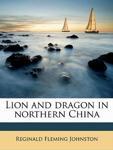
Lion and dragon in northern China, Reginald Johnston, Murray, 1910
451 pages. ISBN 978-1313763936 Details/purchase ➚
ISBN 978-1313763936 Details/purchase ➚ 



Reginald Johnston went on to be the Emperor Pu Yi's tutor and friend so it is to be expected that he knew a thing or two about China. This book is not a history or diary, it is a collection of musing on the traditions, legal system and religion of China at the time that he was governor of the British colony at Weihaiwei, Shandong.
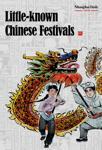
Little-known Chinese Festivals,Shanghai Daily, Shanghai Daily, eBook
75 pages. ASIN B00GZV7K24 Details/purchase ➚
ASIN B00GZV7K24 Details/purchase ➚ 


This little book covers the rarer Chinese festivals. It gives the legendary background and how the events are celebrated in China.

Lonely Planet: China, 1988
821 pages. ISBN 0-86442-003-X Details/purchase ➚
ISBN 0-86442-003-X Details/purchase ➚ 




I have the 1988 edition of the Lonely Planet guide. This was written for the first back-packer tourists when China opened its doors to tourism. The descriptions of historic sites is still useful but the rest is now out-of-date: places to stay; transport and places to eat. The style is very informal, as a well informed, young traveler would write. It has a basic 160 page guide to everything a traveler needs to know covering history, culture and language. Later editions have been updated and improved but I would still go for the Eyewitness China guide instead.
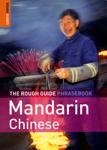
Mandarin Chinese: The Rough Guide Phrasebook, Rough Guides, Penguin Books, 1999
284 pages. ISBN 978-1848367333 Details/purchase ➚
ISBN 978-1848367333 Details/purchase ➚ 



This is a pocket book reference for the traveler with a little knowledge of Chinese. It gives characters and a phonetic spelling of words. It is arranged as a set of useful phrases then an English to Chinese dictionary followed by Chinese to English and finally groups of related Chinese words. A handy guide.

Mao : A Life, Philip Short, Hodder and Stoughton, 1988
782 pages. ISBN 0-340-60624-X Details/purchase ➚
ISBN 0-340-60624-X Details/purchase ➚ 


There are a number of biographies of Mao Zedong available. Nigel Short has written a comprehensive and authoritative work on this often divisive subject. There are over 100 pages of notes and references. It is quite a hard read as the author immersed himself in the detail and many people and places are mentioned in passing without descriptive background. In terms of political balance Short gets it about right - neither too adulatory nor too denigratory.
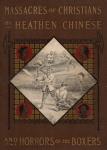
Massacres of Christians by heathen Chinese and horrors of the Boxers, Harold Irwin Cleveland, Miller, 1900
612 pages. ASIN B00088SG0A Details/purchase ➚
ASIN B00088SG0A Details/purchase ➚ 



Disregard the title, this is not a polemic about the evil Chinese; in fact it is really a China reference guide covering all aspects of China as they were in 1900. It is fascinating to read attitudes and misunderstandings that were prevalent at the time. It is a bit disorderly and misleading, the chapter on China and India for example is more about Christian missionary work on China. Subjects covered include: geography (provinces, mountains, rivers); education; missionaries; Korea; Japan; England and Russia; Treaty ports; Army and Navy; the Emperor; Mandarins; Railways; Tea; Opium etc.. Basically a reference to all that was known at the time. It does have a detailed chronology and background to the Boxer Rebellion which gives the book its title - the hot topic at the time.

Modern China: A companion to a rising power, Graham Hutchings, Harvard University Press, 2003
530 pages. ASIN B01K9AI7XM Details/purchase ➚
ASIN B01K9AI7XM Details/purchase ➚ 



An encyclopedia of entries from Agriculture to Zhu Rongji rather than a standard history. This makes it pretty impossible to read from cover to cover. It is about 'modern' history so leaves out mention of anything pre-1900, it also has good entries on each province and institution. Graham Hutchings has a generally anti-Communist and pro-Western outlook that makes it a useful counterbalance to accounts that originate from China. He is reluctant to say anything good came from the Communist Era 1949-1985. The text highlights links to other topics which is helpful. Overall it is a useful reference for the modern period, but only in conjunction with other sources. It has a bibliography but no source references for individual encyclopedia entries.

Monkey, Wu Ch'eng-en: translated by A.Waley, Penguin Classics, 1961
351 pages. ISBN 0-14-044111-5 Details/purchase ➚
ISBN 0-14-044111-5 Details/purchase ➚ 




Monkey is the best known and most widely loved tale from ancient China. It tells the often amusing tale of how a Buddhist monk brought back scriptures from India to China. However the main character is the playful, irreverent, energetic Monkey - still often seen in films, cartoons and books. The tale does not say much about Chinese people or traditions but does give some insight into the Chinese view of Buddhism.

Mowrer in China, Mowrer, Penguin,1938
216 pages. ASIN B0006DCDDI Details/purchase ➚
ASIN B0006DCDDI Details/purchase ➚ 


This little old Penguin book was written by one of the best foreign correspondents of his day. He viewed events in the 1930s with an experienced and perceptive eye. There are few first-hand accounts of China under Chiang Kaishek and the Nationalists. After the foundation of the PRC nationalists and their sympathizers were hounded and nothing good was said about the Republican period. This book highlights the great difficulties faced by the Republican government in those days. He interviewed key members of the famous Song family and experienced the Japanese invasion at first hand. Essential reading for anyone wanting to understand the Republican perspective in those dark days.

Mr. China, Tim Clissold, Harper Business, 2004
252 pages. ISBN 978-0060761400 Details/purchase ➚
ISBN 978-0060761400 Details/purchase ➚ 


The author was one of the first to invest foreign capital on a large scale in the period 1995-2002. It was not successful. The book recounts the engaging personalities and underhand tactics of the Chinese business people they invested with. Much is learned about the Chinese way of doing business and the pitfalls of funding joint venture capital. There is little on the basic economics of doing business it is more a narrative of events at this extra-ordinary time of the gradually opening door into China.
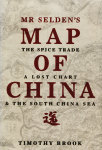
Mr. Selden's Map of China, Timothy Brook, Profile Books, 2013
211 pages. ISBN 978 1-78125-038 Details/purchase ➚
ISBN 978 1-78125-038 Details/purchase ➚ 



This book is a piece of careful detective work, tracking down all that can be found out about this early map of 1608. It documents England's first steps to try to break into the elusive China trade. A rather 'academic' style which wanders off topic a bit.

Myths and Legends of China, Werner, Dover, 1922
453 pages. ISBN 0-486-28092-6 Details/purchase ➚
ISBN 0-486-28092-6 Details/purchase ➚ 


A survey of a country's myths and legends is a very difficult task. By their nature they are hard to tie down and there are usually many alternative stories that have developed over the centuries. The book is handicapped by using wade-giles for names; and lacks cross-references and source information. It was originally published in 1922 and the language and attitudes reflect this period. It covers Buddhist and Daoist figures as well as folk heroes. The myths and legends of China are not widely described and it is useful as a reference.
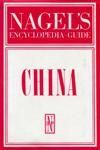
Nagel's Encyclopedia guide: China, Nagel, 1978
1503 pages. ISBN 978-2826307310 Details/purchase ➚
ISBN 978-2826307310 Details/purchase ➚ 




Up to about 1970 Nagel produced the definitive guides to all the major countries in the World, they were required traveling companions for diplomats and tourists. They are voluminous guides and concentrate on historic sites on a province by province basis. My copy dates to 1978 and so is well out of date in terms of town and city plans and statistics. It has a 400 page introduction covering geography, language, history, art, culture and traditions. Originally written in French some illustrations are bi-lingual. There are several fold-out maps and plans. The depth of detail of the historic sites is exceptional. As it was 'the' guide for diplomats to use, trouble was taken to keep it as accurate as possible, and some material remains very useful.

Nearly a Chinese: A life of Clifford Stubbs, Charles Tyzack, Book Guild Publishing, 2013
233 pages. ISBN 978-1846249631 Details/purchase ➚
ISBN 978-1846249631 Details/purchase ➚ 


This recent book documents the life of Clifford Stubbs, a rare example of a Christian missionary who truly engaged with the Chinese people. He taught at the West Union University, Chengdu, Sichuan and garnered the affection of many ordinary Chinese people. There was widespread grief when he was assassinated in 1930, a victim of rabid anti-foreign sentiment at the time. A dedicated and true friend of China.
Key to symbols used in the book descriptions
Note: More up-to-date editions of these books may well exist.
Many books cover more than one topic, these icons reflect all topics it may touch on.